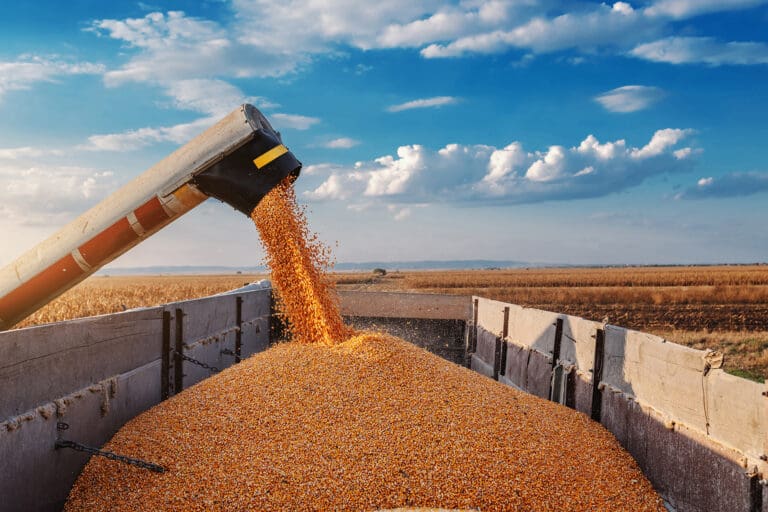Shifting dynamics in the pork and beef markets
The market for 42% pork trimmings has seen a notable shift, with pork 42s trading higher than beef 50s for much of October. For the week of October 21, 2024, the average price for pork 42s was about 26.2% higher than the average price for beef 50s, based on Urner Barry by Expana data for Pork 42% Trimmings and Beef market 50% Fresh Chemical Lean Trimmings. Both of these trimmings are essential for hot dog and sausage production, so price trends have a strong impact on processors in this sector.
This price gap mainly comes from a tight supply of pork 42 trimmings on the spot market. In contrast, beef 50s trimmings have had fully adequate to ample availability, with demand showing signs of weakness. Limited frozen pork trim stocks in cold storage, which have been lower than last year’s levels from January through August, may also be a factor. Sellers might be diverting fresh products into storage, creating a buffer that has kept fresh pork trim prices from dropping, as they typically do historically into the fall and winter months. However, some in the industry believe that as hog weights seasonally increase, pork 42 supplies could rise, possibly pushing prices lower in the longer term.
Usually, beef market trimmings have higher demand than pork trimmings, partly due to the leaner profile of beef 50s, which is desirable for many processing needs. However, historical data shows that this pricing difference is often temporary. When the price gap becomes too wide, pork 42s tend to shift toward a bearish trend, eventually realigning near or below beef 50 prices. This rebalancing trend has already started, with pork 42s showing early signs of price softening during the week of October 28, 2024, as supplies have become more available on the spot market.
For processors in the hot dog and sausage industries, these changing prices for pork 42s and beef 50s can impact production planning and cost management. Watching these shifts closely is essential for managing raw material costs and responding to market dynamics. As prices realign, industry participants must adjust strategies to keep operations efficient and cost-effective where possible.
Korea’s 2024 safeguard on Australian beef kicks in, 43 days earlier y-o-y
As of 24th October, Australian beef imports into Korea have exhausted its 2024 Special Agricultural Safeguard (SSG) volumes, according to the Korea Customs Service website. Imports exceeding this volume now incur a tariff rate of 24.0% for the remainder of the year, up from the current rate of 10.6%. This activation occurred significantly earlier than last year’s 8th December 2023 trigger date, representing a difference of approximately 43 days.
Under the Korea-Australia Free Trade Agreement (KAFTA), the safeguard volume for 2024 is set at 188,437 metric tonnes (mt). Any products shipped before the trigger date that have not yet cleared customs will be eligible for entry at the lower tariff rate. However, any excess tonnage will be deducted from the safeguard volume for 2025.The 2025 safeguard trigger volume is set to increase to 192,206 mt, with the tariff rate reduced to 8.0%.
While this was well within market expectations, this earlier activation underscored Korea’s growing reliance on Australian beef amid shrinking United States (US) supply. Korea is Australia’s third-largest export destination after the US and Japan. However, Australia has been at a competitive disadvantage due to the lower tariff rate on U.S. beef under the U.S.-Korea Free Trade Agreement (KORUS). For example, in 2024, the 5.3% tariff under KORUS gave American beef an edge over the 10.6% tariff applied to Australian beef under KAFTA. With the activation of the safeguard tariff, will widen the tariff differential between Australia and the US from 5.3% to 18.7% for the remainder of 2024.
Korea’s import statistics in September 2024 showed that Australia has surpassed its primary competitor, the United States (US), for the first time since January 2017, except for June 2024 when the two countries’ import volumes were nearly tied. From January to September 2024, imports from Australia grew by an impressive 12.1% (+17,894 mt), bringing the total to 164,545 mt aided by high production.
In contrast, supply shrinkages continued to reduce US availability in the Korean market. Year-to-date volumes (YTD) fell by 13.7% (–27,373 mt), bringing total imports to 172,104 mt by September 2024.
For further insights, please watch our most recent red meat webinar replay.



